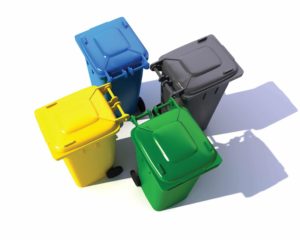During the production process, industrial plants generate large amounts of solid waste. However, certain government regulations applied to materials like ash, sludge and other discharges, have made the removal of such materials more challenging throughout the years. The EPA’s Resource Conservation and Recovery Act of 1976 (RCRA), for instance, created the framework for regulation of solid waste, including hazardous and non-hazardous material. The resolution still applies to a wide range of items today, leaving plant personnel responsible for classification of their waste. While most industrial managers are aware of the regulations that apply to waste material, learning how to meet compliance standards in a more efficient manner can cut costs and decrease headache. Industrial leaders must deal with the ramifications of the EPA’s regulation in the day-to-day running of their operation. As experts in environmental sustainability management, our goal is to provide our readers with an introduction to some best practices for meeting regulatory compliance.
Understanding your waste
All waste, whether hazardous or not, must obtain approval for acceptance before disposal can occur. This requires plants to profile and categorize their waste for submission to a disposal facility. The EPA provides numerous waste codes that industrial leaders need to understand to properly identify the residual material leaving the plant. Codes cover everything from ignitable waste to waste containing toxic levels of certain elements or compounds. MPW’s Facility & Environmental Management (FEM) Division uses a robust waste-identification and characterization process that generates accurate waste descriptions and codes for material. FEM also provides electronic tracking of shipments to allow for ease of management and timely data on waste collection. This makes it possible for companies to see, in real time, how much waste they produce. Tracking both the type of waste and the amount produced gives plant managers the information they need to ultimately reduce unnecessary discharges, thus mitigating any potential environmental damage and cutting down on disposal costs.
Manage the disposal process
Choosing the appropriate transportation and disposal method depends largely on what type of waste a plant is handling. MPW deals with the transportation and tracking of hazardous, non-hazardous, episodic and special waste, among other types. In addition to handling the analysis on the front end, FEM experts can identify the most economical solution for packaging waste material and transporting it to a landfill or other disposal site. Scientifically testing your waste also aids the disposal process. Pinpointing exactly how waste is created allows a company to select the proper technology based on the unique characteristics of the operation. Although testing is often considered a nonessential investment, this can save companies money in the long run and help them see the big picture of their operation. While many companies have waste-handling plans in place, it’s important to partner with a solutions provider that can provide customized service to fit a given plan. Thoroughly understanding the unique situation of a plant is vital for an environmental management program to ensure regulatory compliance and set measureable targets for waste reduction. Leveraging an environmental sustainability management program can help companies not only save money, but perhaps even eliminate certain waste streams altogether.
Utilize Recycled Materials
Finally, consideration should be given to recycling materials or using byproducts as means to other potential gains. Throughout the production process, identifying instances where reuse of existing equipment or elements slated for disposal can not only benefit the environment and community, but a company’s efficiency and, in turn, that company’s bottom line.
